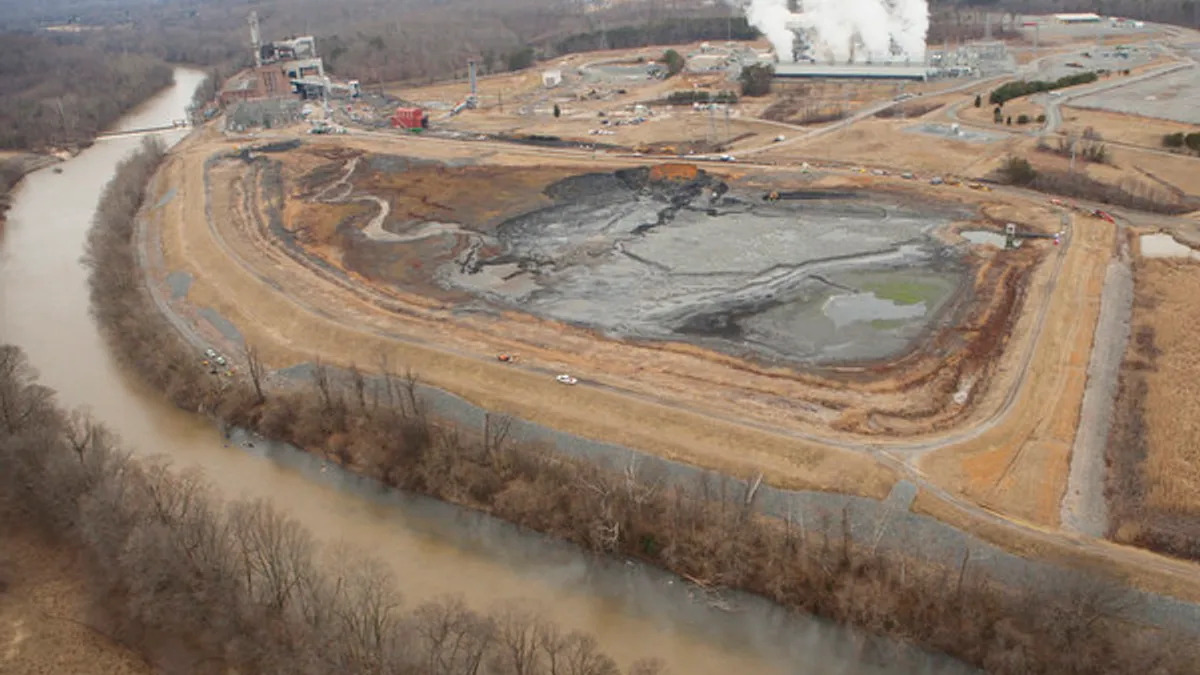Dive Brief:
- The water in 191 wells, 90% of those tested within 1,000 feet Duke Energy’s 32 coal ash pits, proved unsafe to drink or cook with, according to the latest report from North Carolina’s Department of Environment and Natural Resources.
- The well water failed to meet state groundwater standards, the AP reports, with many showing high levels of toxic heavy metals such as lead, vanadium and hexavalent chromium.
- The tests were performed in compliance with the North Carolina law instituted after the 2014 spill of coal ash from a Duke storage pond into the Dan River. The contamination may be naturally occurring, according to Duke, but it will provide bottled water to the well owners while testing goes on.
Dive Insight:
Duke Energy just pleaded guilty to nine misdemeanor violations of the Clean Water Act committed by three of its subsidiaries in the Dan River spill and agreed to pay $68 million in fines that cannot be passed to customers, and $34 million for environmental projects.
The spill occured after Duke refused to spend $20,000 on video inspections of a 48 inch metal pipe built in 1954, one of two storm-water pipes running under the Dan River coal plant ash pond. Prosecutors say Duke engineers were not aware the pipe was made of corrugated metal and not the preferred concrete, although plant employees knew otherwise.
Duke also pleaded guilty to ash violations at four other power plants due to improper equipment maintenance, failure to do recommended pipe inspections, and illegal channeling of ash leaks into rivers. The nation's largest power company is also fighting a $25 million state fine for groundwater contamination at another site, and faces more than a dozen lawsuits from advocacy and shareholder groups. One alleges that Duke intentionally flouted coal ash regulations "improper influence" over the North Carolina Department of Environment and Natural resources
Duke has said it has used the Dan River incident “to set a new, industry-leading standard for the management of coal ash," and has committed to closing ash ponds and improving its management of existing ash.














